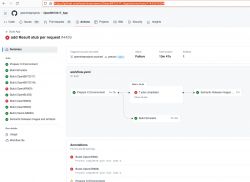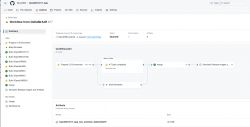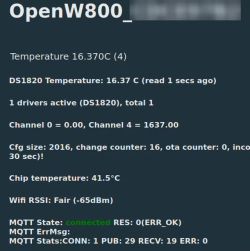But one thing still confuses me - if the problem was caused by "build2" finishing too late, then why sometimes also other assets were not present? "build2" does only Simulator (Windows) build...
Helpful post? Buy me a coffee.

Czy wolisz polską wersję strony elektroda?
Nie, dziękuję Przekieruj mnie tam



p.kaczmarek2 wrote:But one thing still confuses me - if the problem was caused by "build2" finishing too late, then why sometimes also other assets were not present?

max4elektroda wrote:I'm not sure, if my "fix" really is a fix

merge:
runs-on: ubuntu-20.04
needs: [refs, build, build2]
steps:
- name: Merge Artifacts
uses: actions/upload-artifact/merge@v4
with:
name: ${{ env.APP_NAME }}_${{ needs.refs.outputs.version }}
delete-merged: true

- name: Cache Python packages
uses: actions/cache@v3
with:
path: ~/.cache/pip
key: ${{ runner.os }}-pip-${{ hashFiles('**/requirements.txt') }}
restore-keys: |
${{ runner.os }}-pip-
- name: Install Python dependencies
run: pip3 install -r requirements.txt- name: Cache APT packages
uses: actions/cache@v3
with:
path: /var/cache/apt
key: ${{ runner.os }}-apt-cache
restore-keys: |
${{ runner.os }}-apt-cachemax4elektroda wrote:So my conclusion, if I didn't miss something: Nice idea, but not reachable with a reasonable afford.
max4elektroda wrote:What do you think about this "timeout"?

DeDaMrAz wrote:Unfortunately I only have DS18B20 sensors to play with right now
max4elektroda wrote:If you refer to my posting about DS1820: This is just laziness in my writing- I don't have any DS1820, only DS18B20, too but simply just "ignore" the "B" in my posts...
p.kaczmarek2 wrote:Just don't' call SetChannel if there is no new value read.



